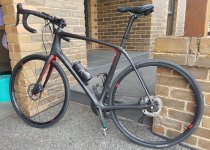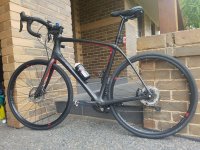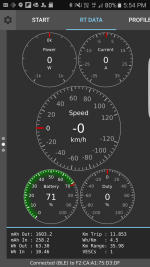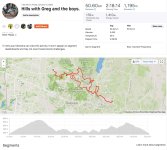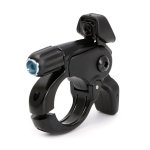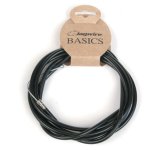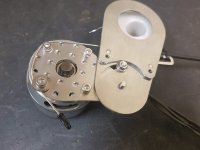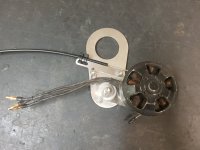I knew you would work out a way of getting regen without touching the brakes.
Can I ask whether you will be making the electronics of this new system available to us mere mortals? The mechanical activationlever install should be pretty DIY although maybe some hints via pics on how you achieved this?
I would be very interested in the reprogramed Ardunio/button setup if you are planning on supplying these?
quote=Kepler post_id=1520498 time=1578391033 user_id=14534]
I currently have two different types of friction drive approaches at the moment. The tire climbing under power design as documented in this thread and the constant contact type as documented in this thread
http://www.endless-sphere.com/forums/viewtopic.php?f=28&t=96581&sid=b676dc4b5f5d1b33815c1abbff5571f0
Both versions have their pros and cons and as such I have been thinking of how to combine the advantages of both systems into one optimised system.
In summary, the main advantage of the tire climbing design is that it fully disengages from the tire when turned off and as such there is no drag on the bike.
The design's main draw back is that it only works in dry weather (unless you use some sort of grip tape and are happy to deal with a new set of issues)
The main advantage of the constant contact approach is that the drive still operates in the wet (at lower power settings) and gives you the opportunity to use regen.
It's disadvantage is that there is light but noticeable drag on the bike with the drive turned off.
So how to combine the best of both systems?
It was obvious I needed to have a mechanical activation method that would keep the drive permanently engaged when wanted and was quick and easy to operate. Secondly there would need to be changes to the software to facilitate regen.
Here is what I came up with.
A generic remote fork lockout lever was installed and linked to the motor pivot so that activating the lockout fully engaged the drive (to its end stop) and releasing the lockout lever allowed the motor to just clear the tire. However, this had an unforeseen secondary advantage which was that I could now adjust the motor to tire clearance using the barrel adjuster via the remote lockout lever. This also allowed me to also remove the gravity spring. It should be noted that the motor could still self engage and climb the tire under power as per the original design.
The Vesc was then reprogrammed for regen and the Ardunio software modified accordingly.
Now with the drive engagement locked and the drive activated via the Ardunio, any coasting now activates regen with around 200W back into the battery. Any pedal input deactivates the regen and activates light assist of around 150 Watts. The boost button can be pressed any time for a total of 250 Watts. Of course these figures vary slightly depending on speed and associated duty cycle.
The locked position is great for those hilly rides where regen can be used. Also in wet conditions, the drive will still operate up to around 100 Watt assist. leaving the engagement unlocked is perfect for dry flat road riding where coasting freely is advantageous.
This picture shows the modified fork lockout lever mounting.
20200107_175703.jpg
Disengaged position.
20200107_180027.jpg
Locked engaged position
20200107_180043.jpg
20200107_180134.jpg
Stats for a local test ride. The drive was activated for most of the ride with the the drive in the locked position.
Battery has 180 Whr usable. Based on these figures, 30 Whr would be returned to the battery via regen which is significant for a battery of this size. Based on these figure, the addition of regen would have increased assisted range by approx 7km
Screenshot_20200107-175412.png
[/quote]
